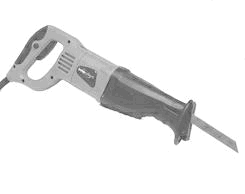
|
Analysis Power Tools Analysis is basically "taking something apart," in order to understanding it better by considering its component parts separately as well as together.
In the first half of your paper, summarize the contents of the item you are analyzing. In the second half of the paper, answer ALL of the questions below, one by one: 1. Analyze the text or work as a material object. This can mean all of the following: a. Analyze the text or work rhetorically. How does the author use reasoned argument (logos), emotion (pathos), or personal character, reputation and credibility (ethos) to reach an audience? Who is the intended audience? What is the author trying to persuade the audience to believe or do? (What is the standpoint of the text or work?) What arguments are used in the text or work to convince the reader? What was the author's purpose in writing this text or work? What evidence is used to support the argument of the text or work? b. Analyze the structure of the text or work itself. What comes first? What comes after? How is it built? Is it a travelogue, or fantasy or a historical novel or a nonfiction work or poetry, or a cartoon or poster, or what? Does it follow a time-line, a logical sequence, a problem-solution-resolution process, a simple list of items, a comparison and contrast analysis, a balance of forces analysis, or does it simply jump back and forth chaotically? How are the chapters or sections divided? What sort of language and imagery does the text or work contain? What style (tone) of language is used (high, medium, or low)? How good is the spelling, grammar, vocabulary and punctuation, or the art work if any?
d. Analyze the text or work as the author's creativity. Who was the author or artist? When and where did s/he live? What is the author's personality, attitude and outlook on life and how does it show up in the text or work? What were the author's upbringing, physical circumstances, health, ethnic background and social class? What other works has this author published, and how do they relate to this text or work? e. Analyze the text or work as communication. How effective is the text or work in communicating the main idea? Who is the intended audience or actual audience of this text or work? How does the voice of the author shine through in the text or work? How true are the facts in the text or work, or is it purely made-up fiction or fantasy? How powerful is the item, whether in persuading the audience or simply in entertaining (which is another form of persuasion)? How effective is the text or work in accomplishing the purpose for which it was created? f. Analyze the text or work in a social context or work. Whom does this text or work serve best? Who in society does it put down, ignore, pretend not to notice or shove aside? Does the author speak for the dominant part of society, or was she/he writing with the voice of the majority who are not dominant? Does the text or work glorify the wealthy, the famous and the proud? Does it lift up the powerless and those who have been pressed down? Is everyone assumed in the text or work to be prosperous, white and healthy, or straight, or young, or English-speaking? Does this text or work make you feel contented and satisfied about the way things are right now in the world, or does it make you want to help make the world better? Does it even engage the real world at all, or not? Does it make you feel hopeless, that life is meaningless and nothing anyone can do matters, or does it suggest that people can make a difference? g. Analyze the text or work from a psychological viewpoint. What are the possible psychological motivations of the author or artist in creating this work, and what does it suggest about the author's mind? What about the psychological motivations of the characters in the text or work?
a. Clarity (How clear is the item?
Is it easy to understand or is it confusing and mysterious, and did the author
intend it that way or not?)
b. Grandeur (How strong, educated, mature and vigorous is the language or imagery? Why?) c. Beauty (Is this text or work a pleasure to read or see? Or, does the author use any annoying or ugly graphics, words and expressions where they are not appropriate? Is the imagery lively or boring?) d. Speed (How fat-free is it? Does the text or work flow along easily, making it easy to read, or does it drag along with extra words, phrases and clutter? Does the author repeat him/herself anywhere in the text or work? Does it keep you at the edge of your seat, or put you to sleep? Why? ) e. Character (If applicable, how realistic or
believable are the characters in the text or graphic? How is the character of the author
reflected in the text or work?) f. Truth (How true are the facts used in the text or work? How well does the author use facts? How well does he/she present sources and proofs for facts, quotes or data cited in the text or work?) g. Gravity (Does this text or work pass the "who cares?" test? How much does this work MATTER? Does it change your mind or your feelings, inform you, or make you agree more with the creator? Why or why not?) 3. What does the text or work have to do with you, personally, and with your life (past, present or future)? It is not acceptable to write that the text or work has NOTHING to do with you, since just about everything humans can create has to do in some way with every other human. a. How much does the text or work agree or clash with your view of the world, and what you consider right and wrong? Analyze the text or work from some certain specific point of view or belief. How does this text or work treat women--does it honor and raise them up, or disrespect and put them down? In what way? How might this text or work read differently through the eyes of a gay or lesbian person than in the view of a straight person? What analysis of the text or work would a third-world reader or a person of color give, or a senior citizen, or a blind or deaf audience? How would you analyze this text or work from a faith-based perspective? Use several quotes as examples of how it agrees with and supports what you think about the world, about right and wrong, and about what you think it is to be human. Use quotes and examples to discuss how the text or work disagrees with what you think about the world and about right and wrong. b How did you learn, and how much were your views and opinions challenged or changed by this text or work, if at all? Did the text or work communicate with you? Why or why not? Give examples of how your views might have changed or been strengthened (or perhaps, of why the item failed to convince you, the way it is). Please do not write "I agree with everything the author wrote," since everybody disagrees about something, even if it is a tiny point. Use quotes to illustrate your points of challenge, where you were persuaded, or where it left you cold. c. How well does it address things that you, personally, care about and consider important to the world? How does it address things that are important to your family, your community, your ethnic group, to people of your economic or social class or background, or your faith tradition? If not, who does the text or work serve? Did it pass the "Who cares?" test? Use quotes to illustrate. 4. Sum up: what is your overall reaction to the item in question? Remember; reading ,writing and viewing "critically" does not mean the same thing as "criticizing," in everyday language (complaining or griping, fault-finding, nit-picking). Your analysis can and should be positive and praise the text or work if possible, as well as pointing out problems, disagreements and shortcomings. Would you read or view something else like this, or by this author or artist, in the future or not? Why or why not? To whom would you recommend this text or work?
|
O.W. Engl 1311 2/2006 rev 1/2010
|
For educational purposes only. |
| Owen M. Williamson - Education Bldg 211E - phone: (915) 747 7625 - fax: (915) 747 5655 |
| The University of Texas at El Paso - 500 W. University Ave. - El Paso, TX 79968 |
| Important Disclaimer |

Open Courseware | OCW |This work is dedicated to the Public Domain..

 --In your first sentences, mention the title of the work to which you
are responding, the author or artist, and the main thesis of the
text or work.
For a book, always underline the title.
--In your first sentences, mention the title of the work to which you
are responding, the author or artist, and the main thesis of the
text or work.
For a book, always underline the title.  c. Analyze the text or work as a product on
the market. How long or short is the item (and is it too long or too
short? Why?). What is the context (social, economic, political,
historical, commercial, intellectual) in which the text or work was produced and sold? How attractive
is the physical form and appearance of the item (cover, printing, type-faces,
website, etc.)? Who is the intended consumer? Why was this text or work written or
published, and how well does it fulfill that purpose for the majority of
readers? Is it commercial (popular), scholarly, journalistic, or some
other form or level, and does it meet expectations for this form of
communication? Did you find any errors, typos or problems within the text
or work
itself?
c. Analyze the text or work as a product on
the market. How long or short is the item (and is it too long or too
short? Why?). What is the context (social, economic, political,
historical, commercial, intellectual) in which the text or work was produced and sold? How attractive
is the physical form and appearance of the item (cover, printing, type-faces,
website, etc.)? Who is the intended consumer? Why was this text or work written or
published, and how well does it fulfill that purpose for the majority of
readers? Is it commercial (popular), scholarly, journalistic, or some
other form or level, and does it meet expectations for this form of
communication? Did you find any errors, typos or problems within the text
or work
itself? 
